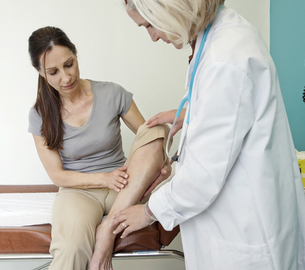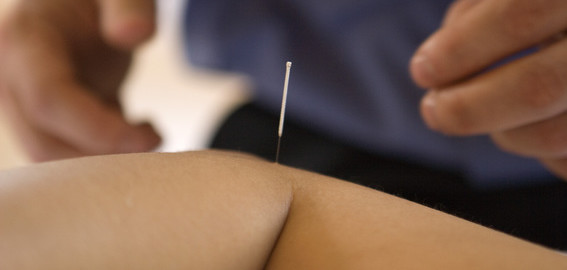It’s been over a year since your primary care physician ran a series of inconclusive tests and diagnosed you with fibromyalgia. It didn’t seem like much was known about your condition. Since then your symptoms haven’t improved, and you’ve wondered if you were even diagnosed correctly. Is fibromyalgia real? If you’ve been diagnosed with fibro, what options do you have for treatment, and how do you ease chronic pain?
What Is Fibromyalgia?
Fibromyalgia is a chronic condition known for its aching, widespread pain that’s often accompanied by tenderness of tendons and muscles. An estimated five million people in the United States alone suffer from fibromyalgia.
Typical symptoms of fibro can include:
- Widespread or localized pain, described as burning, throbbing or sharp
- Aches and stiffness in muscles, tendons and bones
- Chronic fatigue
- Sleeping disorders
- Restless leg syndrome
- Difficulties with concentration and focus due to “fibro fog”
- Tension headaches or migraines
- Cramping in the lower abdomen
- Depression
- IBS
- Numbness or tingling of the extremities
- Sensitivity to temperatures, noises, bright lights and/or potent odors
- Dizziness and lightheadedness
Is Fibromyalgia Real?
Physicians today still remain skeptical regarding whether or not fibro is real. Not only does the condition vary from one individual to the next, but unlike other conditions, no test can diagnose fibromyalgia. Diagnosis usually involves considering the above symptoms and ruling out other conditions with blood tests such as CBC, erythrocyte sedimentation rate and thyroid function.
“Is fibromyalgia real?” is still asked throughout the medical community because the causes of fibro are unknown. Since fibromyalgia tends to run in families, genetics might be a factor. Other theories involve infections and physical and/or emotional trauma.
Since pain is almost always involved in fibro, researchers also believe pain signals are amplified in the brain over time due to overstimulation and an increased release of certain chemicals.
Getting Treated For Fibro
Treatment for fibromyalgia focuses on providing relief from chronic pain, along with minimizing all symptoms present. You’ll need an experienced team of experts to put together a reliable treatment plan for you based on your medical history and current state of health.
In terms of medications, your medical team may recommend you use the following:
- Pregabalin, to date the only pharmaceutical drug approved by the FDA to treat fibro
- NSAIDs, such as ibuprofen, aspirin and naproxen sodium, to decrease pain and inflammation and relieve muscle aches
- Painkillers, such as acetaminophen and prescription medication
- Benzodiazepines, which can help with disruptive sleep, muscle tension and restless leg syndrome
- Antidepressants to elevate chemicals in the brain that will elevate your mood, boost the effect of endorphins, stabilize your sleep patterns and reduce fatigue
- Anti-seizure medications, also commonly used when treating fibro
Treating Fibromyalgia Naturally
Many individuals diagnosed with fibro address it with a combination of Western and Eastern medicine. This approach works best when it comes to maximizing relief from chronic pain and fatigue. Treating fibro naturally might include:
- Learning to reduce stress levels, which might involve therapy, breathing exercises, yoga, meditation and massage.
- Exercising regularly, which has been proven to help fibro patients immensely; stretching and low-impact aerobics such as walking, yoga and swimming are recommended.
- Acupuncture, which could positively affect your blood flow and levels of neurotransmitters in the brain and spinal cord to effectively reduce pain.
- Massage, which can reduce your heart rate, relax your muscles and increase the production of endorphins.
- Eating healthy foods, such as organic fruits and vegetables high in antioxidants that can boost your immune system; ginger and turmeric powder are also said to have excellent anti-inflammatory properties.
- Yoga and tai chi, which can reduce fibro symptoms by combining meditation, deep breathing and relaxation.
- Addressing insomnia and sleep problems in order to boost energy and mood; this might involve following a sleep schedule, avoiding caffeine and alcohol before bedtime, minimizing the length of daytime naps, and incorporating relaxation techniques before falling asleep. Some fibro patients also undergo acupuncture to cure insomnia.
The Next Steps
There’s no need to continue feeling fatigued, achy and living life unfocused and unable to accomplish much. Using evidence-based research, Acupuncture Balanced Health is dedicated to helping you overcome fibromyalgia. Our team of experts is ready to put together a plan designed to treat all of your fibro symptoms. Take the right step toward improving your quality of life, and contact us today to make an appointment.














